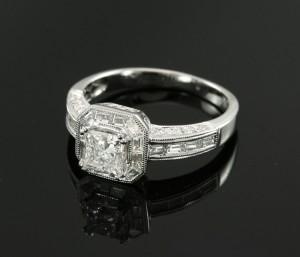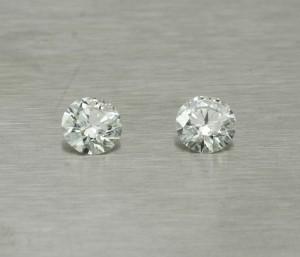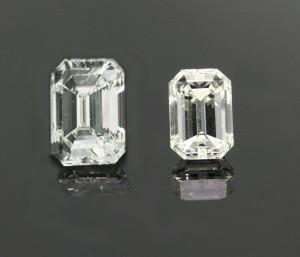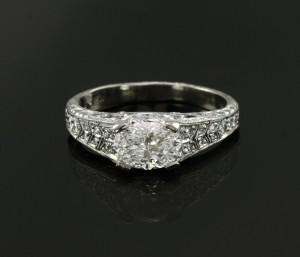 Buying a diamond on a small budget might seem like an impossible task, but if you follow these five tips provided to us by Ira Weissman, you will be able to buy a fabulous diamond within a reasonable budget.
Buying a diamond on a small budget might seem like an impossible task, but if you follow these five tips provided to us by Ira Weissman, you will be able to buy a fabulous diamond within a reasonable budget.
Ira Weissman is a diamond industry veteran with a decade of experience at one of the world’s largest diamond polishers. He has traveled the world buying and selling diamonds and now dedicates his time to helping consumers make the most of their diamond buying decisions. He has been featured on Anderson Cooper, CNBC, The Huffington Post, and has been quoted by MarketWatch, The Village Voice, and BankRate. Visit Truth About Diamonds to educate yourself about diamonds.
Top Five Tips for Buying a Diamond on a Small Budget
1. The Myth about Diamond Color
Many people mistakenly believe that the way to buy a diamond is to go for top marks in all categories of the 4 c’s. This is a big mistake and an even bigger waste of money. For example, the diamond’s color is graded on a scale with D being the whitest grade and each subsequent letter after that going further towards yellow. Where people generally err is when they think they need to select a diamond with a color grade of D or E, but that is simply paying for a feature that no one will appreciate. Unless you are going to walk around with your diamond’s certification papers to show everyone you have a perfectly white colored diamond, then there is no need to spend all that extra money. Instead, I advise people to select a diamond’s color using the following guidelines, which take into account the color of the metal in which you will set the stone:
- White Gold / Platinum Ring
- Round: H-J – higher than H and you’re paying for a feature you won’t be able to appreciate
- Princess, Emerald, Asscher: G-I
- Everything Else: F-H
- Yellow Gold Ring
- Round: K-M – the yellow color of the gold is absorbed into the diamond color, so anything higher than K is going to look slightly yellowish anyway
- Princess, Emerald, Asscher: J-K
- Everything Else: I-J
2. Clarity: to be Flawless or to be Eye-Clean?

Now you might think that buying a diamond with a rating of IF is really the goal. The good news for your wallet is that you don’t have to go that far. Your goal, instead, should be to find an “eye-clean” diamond. That means that someone in normal lighting, without a 10x magnification tool like a jeweler’s loupe, would not be able to see any inclusions. In other words, when your friends look at your engagement ring, can they spot any imperfections or does your diamond look nice and clean? If you are able to find an SI1 diamond, let’s say, and it’s eye-clean, then you will save yourself a pretty penny. You’re better off putting the extra money into getting a bigger carat weight.
3. Buy Before the Carat Price Jump
It’s a well-known phenomenon of our bigger-is-better culture that the bigger the carat weight, the happier the bride-to-be. If your girlfriend actually wants a small diamond, then that’s a fabulous savings for you, and you should consider yourself lucky! But if you, like many men ready to propose, are trying to squeeze your small budget to get the biggest carat weight possible, then here’s a tip for you. Try to find a diamond that is just under the size you want so that you can get the best deal before the price jumps. Diamonds are priced in such a way that at various price points, like from 0.99 carats to 1.0 carats, the price jumps up significantly. There is actually no discernible difference in size between two diamonds of these carat weights. The difference is that one woman can say she has a one-carat diamond and one cannot. Well, you pay for that ability. So if you take into account that the price jumps from 0.49 Ct. to 0.5 Ct., from 0.69-0.7 Ct., and 0.89-0.9 Ct., then you can select your diamond strategically and save yourself money.
4. Cut Quality & L x W Proportions

For example, a 1.00 ct. diamond can be anywhere from 5.6mm — way too deep — to 6.6mm — way too shallow. The difference between 5.6mm and 6.6mm is quite significant. Your goal should be to find a diamond with a quality cut grade and a large table spread, like a 1.00 ct. diamond with at least a 6.3mm diameter and a very good cut.
5. Think Outside the Ring Box

And the other way to make the most of your setting is to choose a long non-traditional shape like a pear, oval, or marquise, and set it on its side. When you set one of these shapes horizontally instead of vertically, there is an optical illusion that makes the diamond appear larger across your finger, as opposed to longer going up and down your finger. The added benefit to this type of setting is that it makes the engagement ring even more unique, a clear advantage for a couple looking for the look of custom-designed jewelry.
Whether your budget allows you to reach the one carat mark or not, the bottom line is there are plenty of ways to make smarter decisions about your bridal jewelry purchase. Remember these important tips when you are considering the diamond’s color, clarity, carat, and cut, as well as what setting will maximize the appearance of the stone — and you will see that you don’t have to spend thousands upon thousands of dollars to get a phenomenal diamond engagement ring for your phenomenal lady.

